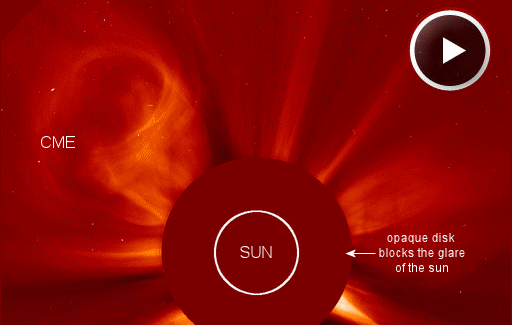|
|
BACK TO WORK (UPDATED): After a quiet weekend with no flares of any significance, the sun went back to work on Monday morning and launched a bright coronal mass ejection (CME) into space. The Solar and Heliospheric Observatory recorded the expanding cloud during the early hours of Feb. 6th:
Update: New images from the Solar Dynamics Observatory (SDO) show that this was a frontside event. The explosion occured when a magnetic filament draped over the sun's northeastern limb rose up and snapped. An extreme UV movie from SDO shows the structure lifting off. Solar flare alerts: text, voice.
AURORA WATCH: Earth passed through a minor solar wind stream on Feb. 4-5. The weak impact of the solar wind was just enough to spark auroras around parts of the Arctic Circle. Frank Olsen sends this 20-second exposure from the waterfront outside Tromsø, Norway:
"Despite bright moonlight and low solar activity,
there were some great auroras last night," says Olsen.
The effects of the solar wind are subsiding, and the auroras might disappear into the moonlight for the next few nights. Geomagnetic activity is expected to hover at low levels for the next 48 hours. Aurora alerts: text, voice.
more images: from Oivind Toien of Fairbanks, Alaska; from Fredrik Broms of Kvaløya, Norway
![]()
|
Solar wind X-ray Solar Flares
Daily Sun: 06 Feb 12 A new cluster of spots is growing just north of AR1410. Credit: SDO/HMI
Sunspot number: 37
Current Auroral Oval: Switch to: Europe, USA, New Zealand, Antarctica
Planetary K-index Interplanetary Mag. Field
Coronal Holes: 06 Feb 12 Solar wind flowing from this coronal hole should reach Earth on or about Feb. 10th. Credit: SDO/AIA. |






